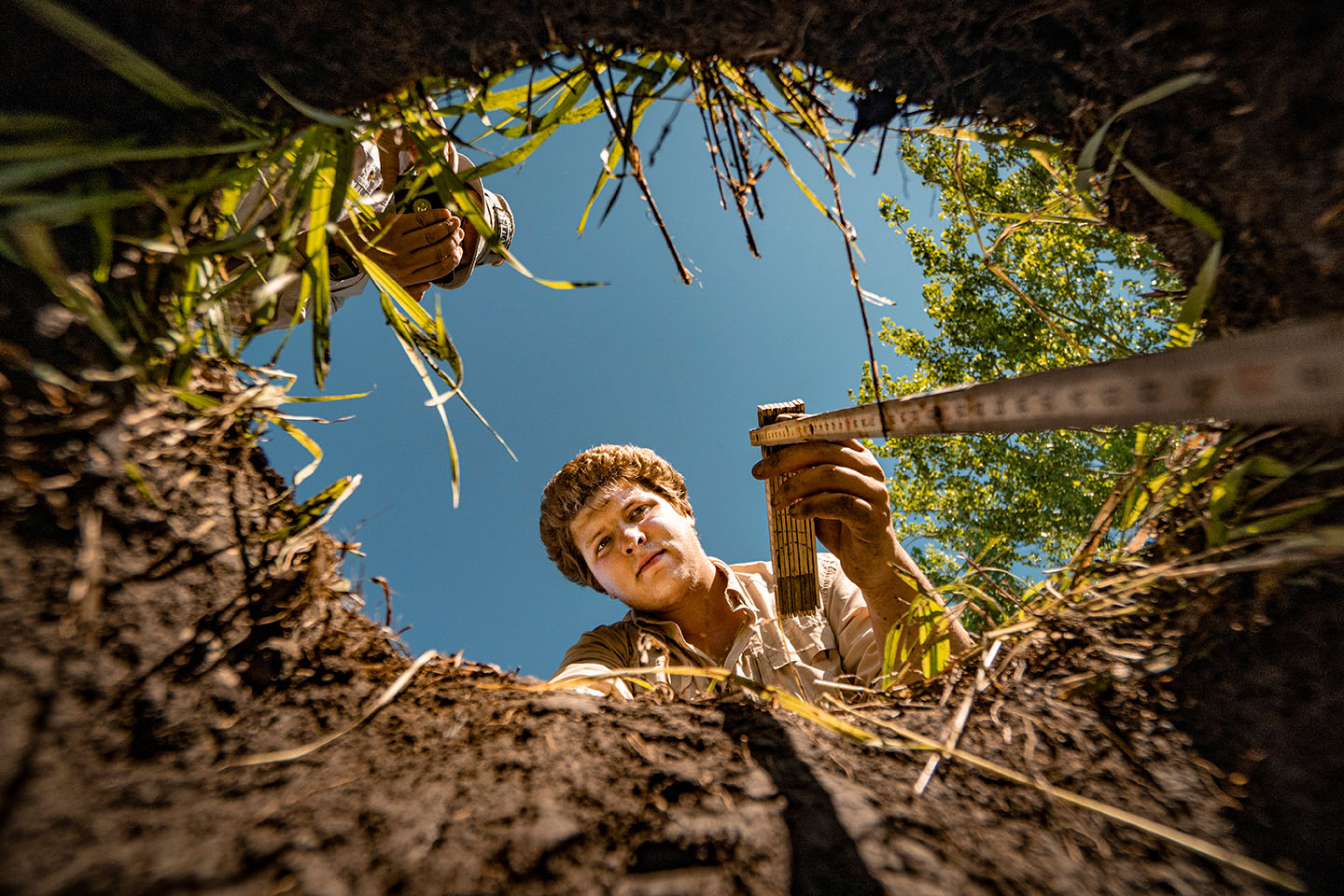
USD Archaeology field school excavates historic town along Vermillion River
The USD Anthropology and Sociology Department hosts an annual field school opportunity for students. The department is hosting the third annual Susan Tuve Archaeology Field School from May 17 to July 11.
Tony Krus, assistant professor of anthropology at USD, is one of the co-directors of the archaeological field school.
“It’s all about just trying to figure out what archaeological sites are in Clay County along the Vermillion River drainage basin. The design of the project is to answer research questions involving the project with a training and educational component,” Krus said. “USD has a long history of training students to become archaeologists.”
The field school focuses on historical settlement along the Vermillion River and drainage area. The students will be studying historic and prehistoric sites.
USD Alumni William Ranney is a member of the Clay County Historic Preservation Commission and the field schools’ co-director.
“We are going to be looking at both prehistoric, looking for Native American sites, and we’ve got quite a few historic sites that were very early historic sites in the history of Clay County,” Ranney said.
In 2019, the field school excavated an old historic town called Bloomingdale.
“This was an old community that was right along the Vermillion River. It’s the sight of a small community and a flour mill. We were able to identify a number of different spots probably representing where there were residences,” Ranney said.
“We’ll learn more about the town that the mill was a part of, and will see if we can figure out where we think there might be foundations to historic structures. We’re going to see if those are indeed from the 19th century,” Krus said.
Twelve undergrad students and one graduate student are involved in this years’ field school.
“Students will be out in the field from about 8:30 a.m. to 3:30 p.m., Monday through Friday. It’s a little different than a class I teach right now where we meet for 50 minutes three times a week – it’s almost like a full-time job while you’re enrolled,” Krus said.
This field class will provide students with three to four credits, depending on if the students participate for three or four weeks, for USD transcripts. Most of the students are working towards an anthropology major or minor, or an archaeology minor.
USD also has an archaeology laboratory called the ARCHLAB where students clean and catalog artifacts, Krus said.
“It’s like a great experience for the students to get training, and finding what your average archaeological site might be like,” Krus said.

